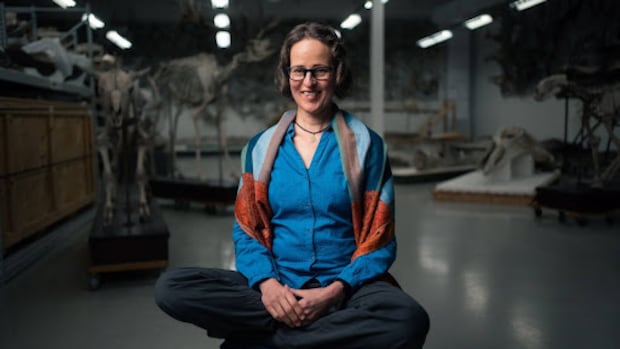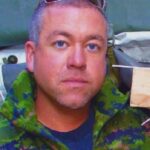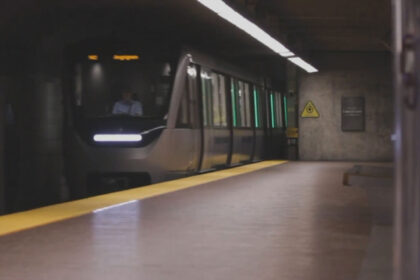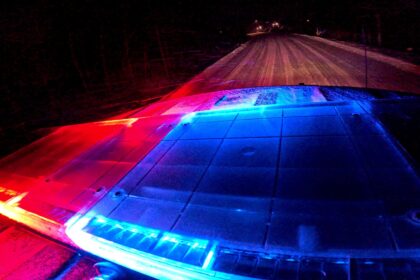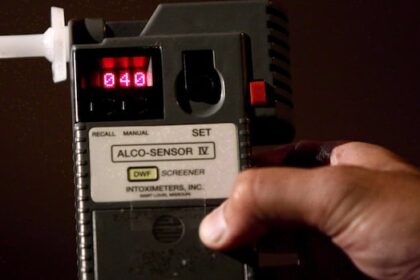This First Person narrative is by Natalia Rybczynski, who lives in Ottawa. She worked with CBC producers to structure and transcribe her oral storytelling. For more information about First Person stories, see the FAQ. I used to have a firm belief that if I was motivated enough and put in the hard work to achieve my goals, everything was within my reach. I was employed as a paleontologist, specializing in the Canadian High Arctic. It is fascinating work to study ancient ecosystems, such as when camels walked through what were lush forests in Canada’s Far North four million years ago. I believed in positive thinking. I was used to pushing through challenges. My job demanded it. I led research expeditions, mentored students, wrote grants and published research. I was always productive and active. At the time of my injury, I was training for a ski race. That’s why when my doctor said my concussion symptoms would go away in about 10 days, I believed it.The day my life changedMy concussion happened during a night ski in the Gatineau Hills near Ottawa in 2011. I was on a fast, icy track when another skier lost control and hit me head-on. The impact threw me into a ravine. It left me with a gap in my memory and a sore jaw. The next morning, I knew something more was wrong when I was so disoriented that I had trouble finding the toothpaste tube on the counter. After a few days, I was diagnosed with a concussion. The doctor told me to take it easy and that my symptoms of dizziness, nausea and headaches would be gone soon.After suffering a traumatic brain injury when she was hit by another cross-country skier on a Gatineau trail, Rybczynski recalls experiencing confusing and surprising symptoms. (Global Mechanic/Courtesy of Handful of Films)The trip that changed everythingAbout a month after my injury, I was scheduled to go to Antarctica. This was a massive undertaking that I had put a ton of work into — a once-in-a-lifetime opportunity. I felt a huge obligation to my students and colleagues to go even though I was still experiencing symptoms. A CT scan showed no brain bleed, and the doctor said I was good to go.During the trip, I noticed my symptoms were getting worse. I was often nauseous and found it difficult to engage in conversations. While hiking, I couldn’t keep up with the group, and I felt a sense of profound exhaustion that was very strange for me since I was used to being athletic. But it was on our way back from Antarctica that I believe was the real turning point in my life.In the infamous Drake Passage, which is known for its large storms, the ship was rocking so violently that we were told to stay in our rooms to avoid getting hurt. I can’t be sure, but I think that rocking did more damage to my already inflamed brain.When I got home, I had a hard time unpacking. I found a tube of sunscreen with Spanish writing on it and had no recollection of buying or using it. This was the first time I noticed significant memory gaps.Before her 2011 brain injury, Rybczynski made several spectacular discoveries, including the ancient High Arctic camel. (Ryan Wilkes/Courtesy of Handful of Films)A messy realityAlong the way, I was told by some doctors that my symptoms were from anxiety or that I was “catastrophizing.” It made me question my reality. But my symptoms were real, and they were piling up. For years, I believed I would get better. I did all the recommended physical therapies, and I kept pushing, trying to go back to work and planning future Arctic trips. My brain was injured, so it was hard for me to gauge the depth of the injury. I was living with the assumption that I would soon return to my old life.WATCH | Rybczynski describes her symptoms:The strange early symptoms of my head injuryAfter her initial head injury, Natalia Rybczynski began feeling headaches and nausea, but stranger symptoms too. Like being unable to see the toothpaste on the counter or finding sunlight painful. Watch Frozen in Time on CBC Gem. In 2014, I was diagnosed with post-concussion postural orthostatic tachycardia syndrome, which meant I had severe fatigue and a feeling of lightheadedness, headache, nausea and chills whenever I stood up. Sometimes I’d experience these symptoms even just sitting in a chair too long. Medication helped with managing these issues, and I remember feeling a surge of hope, thinking, “This is it; this is the key to my recovery.” I even had enough energy to think about washing the windows. Part of the reason I held onto hope was that my post-concussion symptoms fluctuated. Some days I can do more, but I pay for it the next day. I could hold a meeting with colleagues, but I had to spend my whole day preparing for it and then build in time to rest afterward. So I could deceive others and myself into believing that everything was fine — or at least that it was getting better. It wasn’t until four years after my injury that a doctor’s note to my employer made it clear I wouldn’t be able to return to work full-time. Even then, I had hope. I still believed in the power of positive thinking. Finding a new way forwardI finally retired in 2016, five years after my injury. My job was flexible, which allowed me to keep working for a long time, but it eventually became clear that I couldn’t continue. The loss was immense. Not only did I lose my career, but I lost my hobbies, my ability to comfortably socialize in groups, and my sense of identity as an active, productive person. I’ve been lucky to have a supportive family and especially my husband by my side. He has been a rock, taking on more responsibilities and understanding my struggles.But my grief of losing who I am persists. I can accept where I am today with my health, but that doesn’t mean I’ve made peace with it. Every day is hard. Simple tasks like grocery shopping or driving require immense effort. I have to pace myself and listen to my body, which is a big shift from my old mentality of pushing through. My previous approach to positive thinking — the one that got me through graduate school and made me the highly motivated scientist that I was — was actually harmful during my recovery. It made me ignore my symptoms and try to live a life I was no longer capable of living.WATCH | Rybczynski says her injured brain never stopped thinking:While recovering, I had time to thinkDuring her long recovery and spending many of her days sleeping, Rybczynski was able to consider her research and concepts in detail. Watch Frozen in Time on CBC Gem. But I haven’t given up entirely on the power of positive thinking. These days, I still have to sometimes remind myself that my brain is injured, but I’m getting better at observing and believing my symptoms and I’ve learned it’s possible to pair hope with acceptance. In 2024, I returned to field work in the High Arctic. It felt like a tremendous accomplishment. Although I still have a lot of symptoms, especially fatigue, I’ve made improvements through ongoing neck and vision therapies among others. I might still get better someday and return back to my full capacity before my concussion. But if I don’t, that’s OK too. I’ve also learned the value of small joys — a walk in nature, a short visit with a friend. I carve out time to do paleontological research too. These moments help me embrace the messy middle of my healing journey and still find the beauty in my life. Watch Frozen in Time on CBC Gem and The Nature of Things YouTube channel.Do you have a compelling personal story that can bring understanding or help others? We want to hear from you. Here’s more info on how to pitch to us.
Wednesday, 19 Nov 2025
Canada – The Illusion
Search
Have an existing account?
Sign In
© 2022 Foxiz News Network. Ruby Design Company. All Rights Reserved.
You May also Like
- More News:
- history
- Standing Bear Network
- John Gonzalez
- ᐊᔭᐦᑊ ayahp — It happened
- Creation
- Beneath the Water
- Olympic gold medal
- Jim Thorpe
- type O blood
- the bringer of life
- Raven
- Wás’agi
- NoiseCat
- 'Sugarcane'
- The rivers still sing
- ᑲᓂᐸᐏᐟ ᒪᐢᑿ
- ᐅᑳᐤ okâw — We remember
- ᐊᓂᓈᐯᐃᐧᐣ aninâpêwin — Truth
- This is what it means to be human.
- Nokoma


